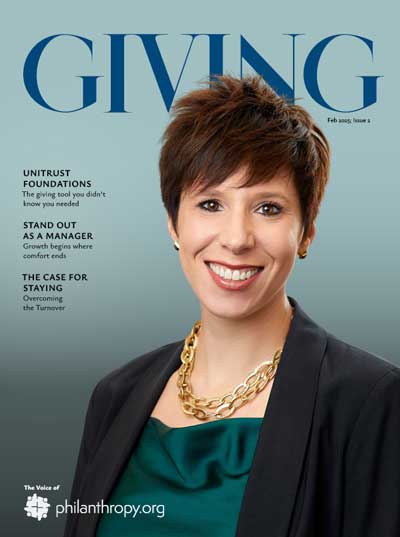Just Do the Math
Baby Boomers, who are among the wealthiest and most charitable Americans, are dying at a rate of about 6,000 per day. And unless your nonprofit has a planned giving program, that means about $6 billion in estate dollars is being lost every day. Unless you’re planning to fail, it’s time to reprioritize that marketing budget.
By the way, the difference between millions and billions is more staggering than you think. Read on to be shocked.
The numbers don’t lie: The longer you wait to start a planned giving program, the more money you’re losing. And we’re not talking about nickels and dimes. We’re talking the kind of money that can be transformational to a nonprofit. And the nonprofits and fundraisers that understand this are among the most successful; the top 1%.
This is not an opinion. It’s a fact — and we have the figures to back it up.
Yet we consistently hear the same refrain from an alarming number of nonprofits: “Sorry, nothing in the budget for planned giving right now.”
This leads me to believe there’s one of two things going on at these nonprofits:
- They have a line on an alternative source of funding that’s so plentiful it will soon solve all their problems and sustain their mission for generations to come, but they’re not sharing.
- The folks in charge simply don’t understand math.
Since there’s no evidence to support the first supposition, I’m leaning strongly toward No. 2. As comedian Steven Wright once said, “Five out of four people have trouble with fractions.”
And with that in mind, let’s break down the math in a way that (hopefully) makes $ense—to your board, to your boss, and you.
Sobering Numbers
First, some statistics: Baby Boomers are dying at the rate of about 6,000 per day.
They are some of the wealthiest Americans, with an average net worth of between $970,000 and $1.2 million.
They’re also the most charitable generation: Boomers are responsible for almost half of all charitable giving in the United States—43%! They will leave an estimated $11.9 trillion to charities. And those charities with planned giving programs will receive the greatest share.
So how much estate money is dying daily with them, on average?
If we assume a net worth of $1,000,000 ($1 M) each, here’s how that breaks down:
6,000 X $1,000,000 / day = $6,000,000,000 per day.
If you’re struggling with all those zeroes, that’s six billion dollars.
Per day.
Millions, Billions, Trillions … Lost
I’ve already mentioned one of the reasons many nonprofits ignore planned giving: The folks making the decisions don’t understand math as well as they think.
For instance, did you know you (and the rest of us) are much closer to being a millionaire, than a millionaire is to being a billionaire?
A million is one thousand thousand, or 1,000,000. A billion is a thousand million, or 1,000,000,000. To put those numbers into more comprehensible terms, view them in terms of time: A million seconds lasts about 12 days. A billion seconds lasts 32 years.
Or better yet, think of it like this: If you had to spend a million dollars at the rate of $1,000 a day, you would run out of money in three years. But doing the same with a billion dollars would take you 2,740 years before you went broke. I think you’d be pretty old by then, no?
I’ll never forget the time I asked 45 fundraisers at an AFP conference how much they thought the top 1% (the so called “rich”) of Americans make.
The correct answer, according to the IRS, is $500,000 a year.
But the fundraisers’ out-of-touch guesses ranged from $5M to $50,000,000 … and proved why so many nonprofits are pouring cash down the drain by attempting to pursue these unicorn prospects while neglecting the rest of the population. A simple planned gift program that targets the average American will have a far better ROI than a program that focuses only on pursuing “wealthy” donors.
Going, Going, Gone
A planned gift has always been a deferred gift. That means the best time to start a planned giving program was 20 years ago. The second-best time?
Today.
Because the longer you wait, the more you’re missing out on. And what you’re missing out on is money that’s gone forever. It will go to other nonprofits in the top 1 percent. It will go to heirs who will not donate it. And a good portion of it will likely be lost to avoidable taxes because of poor or nonexistent estate planning.
The story doesn’t have to end that way, though. Even a basic planned giving program that focuses only on bequests will funnel some of that money into your nonprofit’s coffers. Bequests from middle-class donors frequently exceed $100,000. That means a simple Legacy Microsite, which costs less than $1,000 annually, has the potential for enough ROI that it could pay for itself multiple times over in the course of a year.
Planned Giving Transforms and Sustains Nonprofits
Experts have long known about the importance of a planned giving program and the benefits it brings to a nonprofit. Back in 2011, a report from financial giant Morgan Stanley stated that planned giving is responsible for more than half of new capital campaigns. That number has been steadily increasing since then. And study after study shows planned giving also increases the number of annual gifts!
In fact, those who make legacy gifts (bequests) are likely to make annual gifts that are 200–300 times larger than their largest previous annual gift. And Giving USA’s 2023 Report found that giving by bequests was up almost 5 percent last year, totaling $42.68 billion—and was the only type of donation that held its own against inflation. The report found bequests represent 8 percent of overall giving—outpacing even corporate giving.
Furthermore, Blackbaud’s Charitable Giving Report found some organizations receive more than 25% of their annual revenue from legacy gifts. Those gifts increase nearly 5% every year … even during times of widespread financial distress!
Planned Giving Represents Legitimacy
There’s another, less tangible reason that a planned giving program is vital: It’s a sign that your nonprofit takes its finances (and, therefore, its mission) seriously and has a long term vision.
Planned giving is a hallmark of legitimate, prestigious organizations that are serious about long-term goals. Donors don’t want their hard-earned gift to be wasted. They want to ensure their money goes to a successful nonprofit. And the savviest donors are well aware of planned giving options. They’ll consider all their options before supporting a cause.
Translation: If you don’t have a planned giving program, you’re losing prospects. Why? You’re not taken seriously. Period. Your donors and prospects will see that you’re not planning for the future. Then they’ll look elsewhere, and another group will get funding that could have been yours.
Great Wealth Transfer
Surely you’ve heard of the Great Wealth Transfer? In the next 20 years, an estimated $30 trillion will change hands in the United States as the Baby Boomer generation passes its wealth on to the next generation.
But the only way your organization will see a penny of it is through a planned giving program that allows your supporters to make a legacy gift.
Experts consider this to be the largest wealth transfer in human history, and quite possibly the single greatest opportunity for philanthropy in the modern era. Do you really want to sit this one out with the B-team on the bench? Just a small investment in a basic planned giving program and some marketing—even if it’s just a simple 12-month marketing plan— gets you on the playing field.
A Career Builder
There’s one more reason to institute a planned giving program at your nonprofit: It’s a career builder.
In my more than 20 years in this industry, I’ve seen that those who even only dabble in planned giving tend to have more stable jobs, earn higher pay, and hold down a position longer than those who “think and eat” only annual and major gifts.
Even those fundraisers who just dip a toe in the planned-giving waters are earning 50 percent to 100 percent more than those who aren’t.
I’ve been saying it for decades, and I’ll continue to shout it from the rooftops: Planned giving works!
It provides your nonprofit with a lifeline of support, even when the economy is like a roller-coaster and annual donations are down. It ensures long-term sustainability and amplified mission impact for generations to come. It shows supporters that you’re serious about your mission; that your board and higher-ups have a plan and understand finances. It gives your annual giving program a shot in the arm, and turns casual supporters into an engaged family. And it helps you climb the career ladder.The significance of planned giving cannot be overemphasized.
Stop waiting for the perfect moment to launch your legacy gifts program. That perfect moment is now. And please, stop saying there’s not enough money in the budget. Surely you can find enough for a microsite, or a basic marketing campaign. Because the longer you wait to get started, the more money you’re effectively directing away from your budget—and into someone else’s. Run the numbers, and you’ll find the answers—it’s basic math.
And on that note, I’ll leave you with one more quote:
Life is a math equation. In order to gain the most, you have to know how to convert negatives into positives.
Anonymous Tweet



